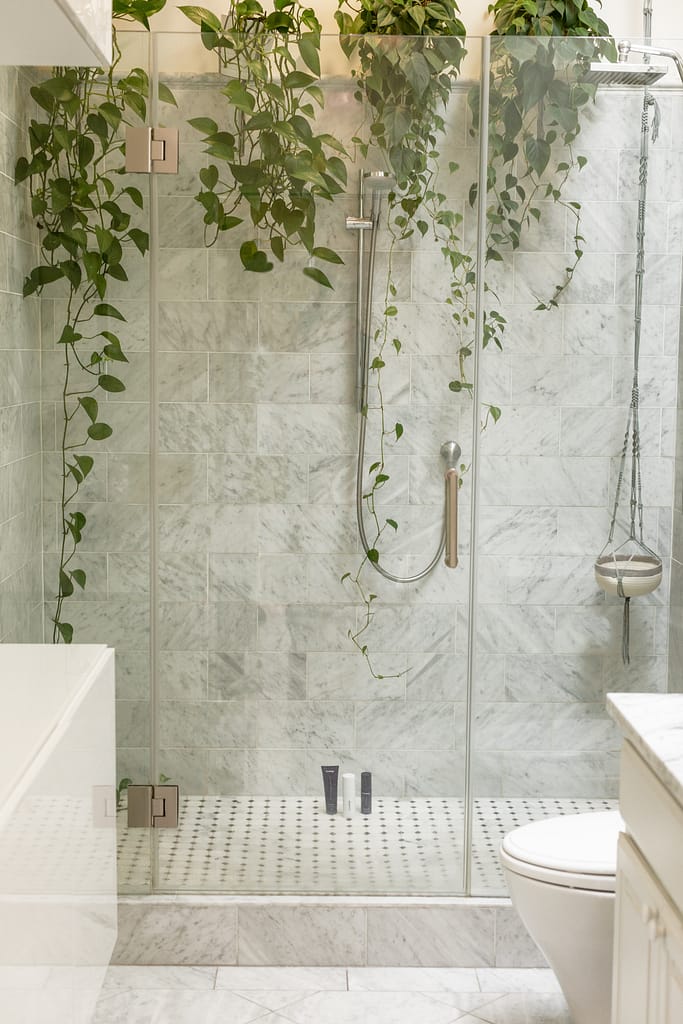Bathrooms are often challenging spaces for growing plants, as they typically lack natural light. However, there are still many plants that can thrive in a bathroom with no natural light. In this blog post, we will explore some of the best plants for bathrooms with no natural light and provide tips for caring for them.
If you have a bathroom that does not have a window then you may have some problems growing plants in there. However, you can still grow some plants in your bathroom, but you may need to get a bit creative.

But first, you will need to understand the following;
There are two methods that you can use to grow a plant in a bathroom with no or very little natural light.
1) Switch position regularly
This method involves having 2-4 houseplants where only one is in your bathroom at any one time.
Make sure that all plants receive adequate natural light from an alternative window elsewhere in your home for several weeks, and then simply bring one into your bathroom for up to 2 weeks at a time.
After the 2 weeks, switch that plant with another, then repeat.
This method ensures that your plants don’t go too long without enough natural light, so they should remain healthy, but if you do see any signs of the plants suffering then you should switch them more regularly.
2) Use artificial grow lights
To grow a plant with very little or no natural light at all, you will need to provide an artificial light source for your plant. The best type of light to use is an LED grow light. LED grow lights emit a full spectrum of light, which is perfect for plants, as it replicates the natural light they would get from the sun. They are also very energy efficient so you won’t have to worry about your electric bill going up, and often can be run from a USB battery pack.
To set up your grow light, you will need to purchase a grow light fixture and a light timer. Hang the grow light fixture above your plant, and plug it into the light timer. Set the light timer to turn the light on for 12 hours per day, as your plant will need this much light to photosynthesize and grow.
Water your plant as needed, and fertilize it every two weeks with a half-strength fertilizer solution.
With proper care, your plant will grow and thrive, even without natural light.
The best plants for bathrooms with no natural light:
One of the best plants for a bathroom with no natural light is the pothos. Pothos are a type of ivy that can tolerate low light conditions and are easy to care for. They prefer a well-draining soil and should be watered regularly, but not allowed to dry out completely. Pothos can be grown in pots or hanging baskets, and will trail down and add a touch of greenery to the space.
Another good option for a bathroom with no natural light is the snake plant. Snake plants are succulents that are drought-resistant and can tolerate low light conditions. They prefer a well-draining soil and should be watered sparingly, allowing the soil to dry out completely between watering. Snake plants can be grown in pots or mounted on a stake, and their tall, upright leaves will add a touch of elegance to the space.
Ferns are another type of plant that can thrive in a bathroom with no natural light. Ferns prefer a moist, well-draining soil and should be watered regularly, but not allowed to dry out completely. They can be grown in pots or hanging baskets, and their delicate, lacy leaves will add a touch of beauty to the space.
Bromeliads are another good choice for a bathroom with no natural light. These tropical plants are colorful and exotic, and can add a touch of the rainforest to the space. Bromeliads prefer a well-draining soil and should be watered.
These plants are able to tolerate lower light levels than many other plants, making them ideal for growing in rooms with limited to no natural light. They also tend to be relatively low-maintenance, making them a good option for those who don’t want to spend a lot of time caring for their plants.
